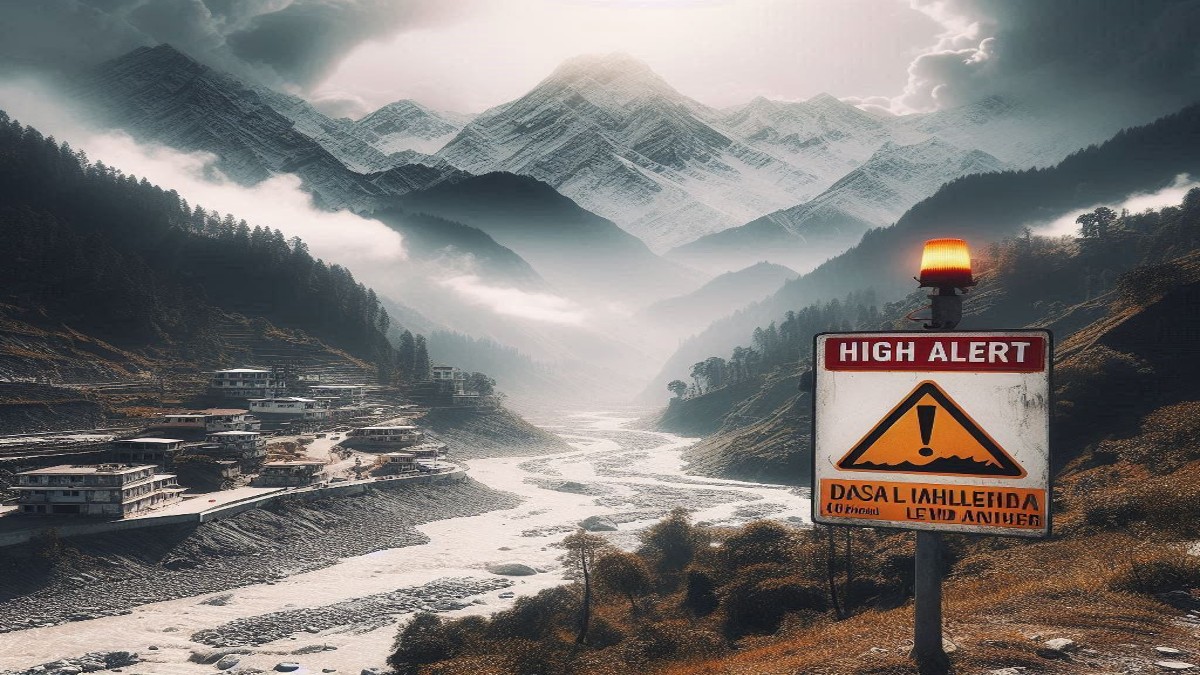
Uttarakhand
Uttarakhand, the serene northern state of India known for its picturesque mountains and spiritual landmarks, is facing a severe crisis as landslides triggered by incessant rains have brought life to a standstill. On September 14, 2024, the state government declared a high alert, halting all travel to key pilgrimage routes, including Badrinath, one of the four Char Dham destinations.
With rising concern over the safety of tourists, pilgrims, and residents, the situation continues to evolve rapidly. In this article, we’ll delve into the details of the crisis, the impact on daily life, the measures being taken by the government, and the broader implications of climate change on Uttarakhand’s fragile ecosystem.
A State in Crisis: The Landslides
Uttarakhand’s geographical location in the Himalayan region makes it prone to natural disasters, especially during the monsoon season. Heavy rainfall over the past few days has saturated the soil, causing multiple landslides in key areas. The most significant landslide occurred on the Rishikesh-Badrinath National Highway, which serves as the main artery connecting pilgrims and tourists to the sacred town of Badrinath.
The landslides have blocked several routes, with large boulders and debris covering the roads. Rescue teams have been deployed, but access to certain areas remains restricted due to the severity of the blockage. The local government has urged people to avoid non-essential travel and has halted all vehicles heading toward Badrinath, Kedarnath, and nearby regions.
Safety Measures: Government Response
In response to the escalating situation, Uttarakhand Chief Minister Pushkar Singh Dhami has assured the public that all necessary precautions are being taken to mitigate the damage and ensure the safety of residents and tourists. “Our teams are working round-the-clock to clear the blocked routes. Evacuation plans have been put in place for those stranded, and temporary shelters have been set up to house those in need,” Dhami said during a press conference.
The government has also deployed the State Disaster Response Force (SDRF) and National Disaster Response Force (NDRF) to assist in the rescue operations. Helicopters have been dispatched to airlift stranded individuals, especially in areas where road access is completely cut off.
Additionally, meteorological departments have predicted further rainfall in the coming days, prompting the state government to extend the high alert until conditions improve.
Impact on Pilgrimage and Tourism
Uttarakhand’s economy is heavily reliant on tourism, especially during the pilgrimage season. The Char Dham Yatra, which includes visits to Badrinath, Kedarnath, Gangotri, and Yamunotri, attracts millions of pilgrims annually. The current halt in travel to Badrinath has led to mass cancellations, disrupting travel plans for thousands of devotees.
Local businesses, hotels, and tour operators are experiencing a major downturn due to the halt in tourism. According to the president of the Uttarakhand Tourism Association, “This is the peak season for us, and the current situation is devastating for the tourism sector. We are hopeful that the government will offer support to help mitigate the financial losses.”
In addition to the economic impact, the emotional toll on pilgrims is significant. Many people travel to Badrinath as part of a spiritual journey, and the disruption has left them disheartened. However, safety remains the top priority, and religious authorities have urged devotees to postpone their plans until the situation stabilizes.
The Fragile Ecosystem of Uttarakhand
The latest landslides have once again highlighted the fragile nature of Uttarakhand’s ecosystem. The state, which is part of the larger Himalayan belt, is highly vulnerable to the effects of climate change. Over the past decade, experts have raised concerns about the increasing frequency and severity of natural disasters in the region.
Deforestation, unregulated construction, and increasing human activity have exacerbated the vulnerability of the region. In particular, the Char Dham road project, which aims to improve connectivity to the pilgrimage sites, has faced criticism for its environmental impact. Experts argue that widening roads in the already fragile mountain terrain increases the risk of landslides.
Dr. Anil Joshi, an environmentalist based in Uttarakhand, has been vocal about the need to strike a balance between development and ecological preservation. “While development is essential for the state’s economy, it should not come at the cost of the environment. The ongoing landslides are a reminder that we need to approach infrastructure projects with greater caution,” Dr. Joshi said.
Climate Change: A Growing Threat
The monsoon season in Uttarakhand has always been a time of caution, but in recent years, the intensity of rainfall and the frequency of extreme weather events have increased. Scientists have linked this pattern to global climate change, which is altering weather systems across the world.
The Intergovernmental Panel on Climate Change (IPCC) has warned that Himalayan regions like Uttarakhand are particularly vulnerable to the impacts of global warming. The rising temperatures are causing glaciers to melt at an alarming rate, increasing the risk of glacial lake outburst floods (GLOFs) and contributing to the instability of mountain slopes.
The local government has taken some steps to address these concerns, including the establishment of early warning systems for landslides and flash floods. However, more comprehensive measures are needed to protect the region from the long-term impacts of climate change.
The Humanitarian Crisis: Stranded Residents and Pilgrims
The immediate focus of the ongoing relief efforts is on those who are stranded due to the landslides. Several villages near the affected areas have been cut off from the rest of the state, leaving residents without access to basic necessities such as food, water, and medical supplies.
Rescue teams have been working to provide essential supplies to those in need, but the scale of the disaster has made it challenging to reach some of the more remote areas. In many cases, people are being airlifted to safety, but these efforts are being hampered by the continuing rainfall and unpredictable weather conditions.
Families of pilgrims and tourists who are stranded are also grappling with anxiety as they await updates on the rescue operations. The government has set up helplines to assist in locating missing individuals and is coordinating with local authorities to ensure that all those affected receive the necessary support.
Local Communities and Resilience
Despite the gravity of the situation, the people of Uttarakhand have shown remarkable resilience. Local communities, which are accustomed to dealing with natural disasters, have come together to support one another. Volunteers are assisting in rescue operations, providing shelter, food, and emotional support to those in distress.
The strength of the local community is a testament to the spirit of Uttarakhand. The state has a long history of overcoming adversity, and while the current crisis is severe, the collective efforts of residents, government authorities, and rescue teams offer hope for recovery.
The Road to Recovery: What Lies Ahead
The road to recovery in Uttarakhand will be long and complex. While immediate relief efforts are focused on clearing blocked routes and ensuring the safety of residents and tourists, the long-term challenge will be to rebuild the damaged infrastructure and restore normalcy to the region.
The state government has already announced that compensation will be provided to those affected by the landslides, including financial aid for businesses and families who have suffered losses. In the coming weeks, detailed assessments of the damage will be conducted to determine the full extent of the destruction.
Moreover, the government has indicated that it will review ongoing infrastructure projects to ensure that they do not compromise the environment or increase the risk of future disasters. Environmental experts will play a key role in shaping the state’s policies going forward, as Uttarakhand looks to strike a balance between development and ecological preservation.
Conclusion
The landslides in Uttarakhand serve as a stark reminder of the state’s vulnerability to natural disasters, particularly in the context of climate change. While the immediate focus is on rescue and relief efforts, the long-term challenges of rebuilding and ensuring sustainable development are equally important.
For now, the people of Uttarakhand remain resilient in the face of adversity, and with the coordinated efforts of the government, rescue teams, and local communities, there is hope that the region will recover from this crisis.
As we continue to monitor the situation, it is crucial to remember the importance of safeguarding Uttarakhand’s fragile ecosystem and preparing for the challenges that lie ahead. In the meantime, the state remains on high alert, with all eyes on the efforts to clear the blocked routes and restore safety to the region.






